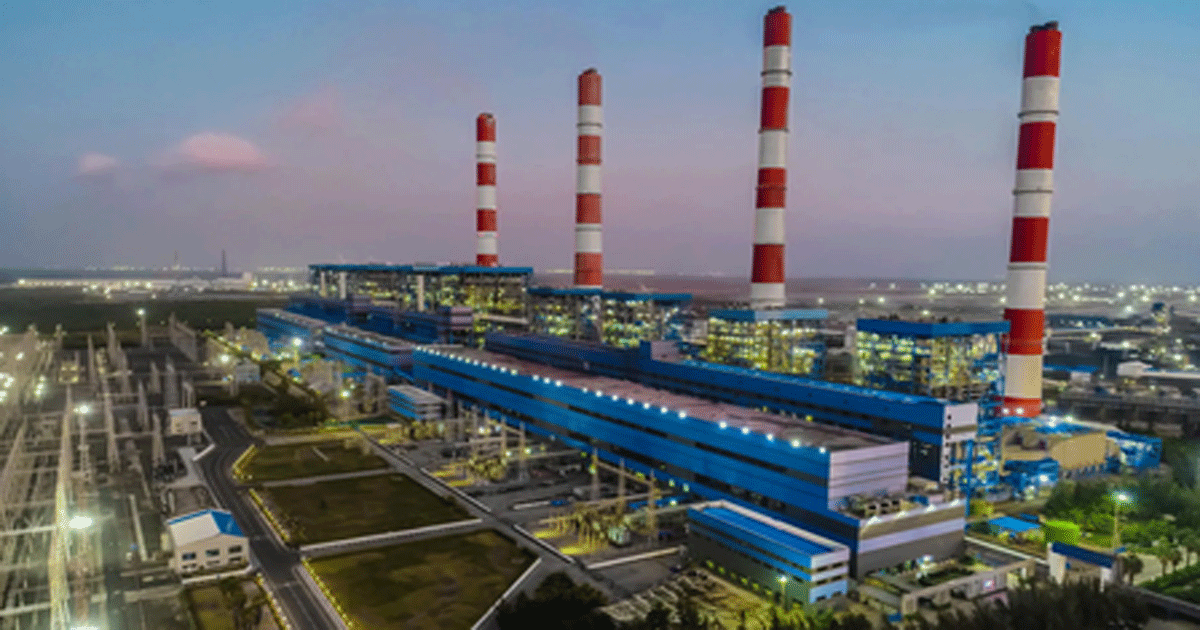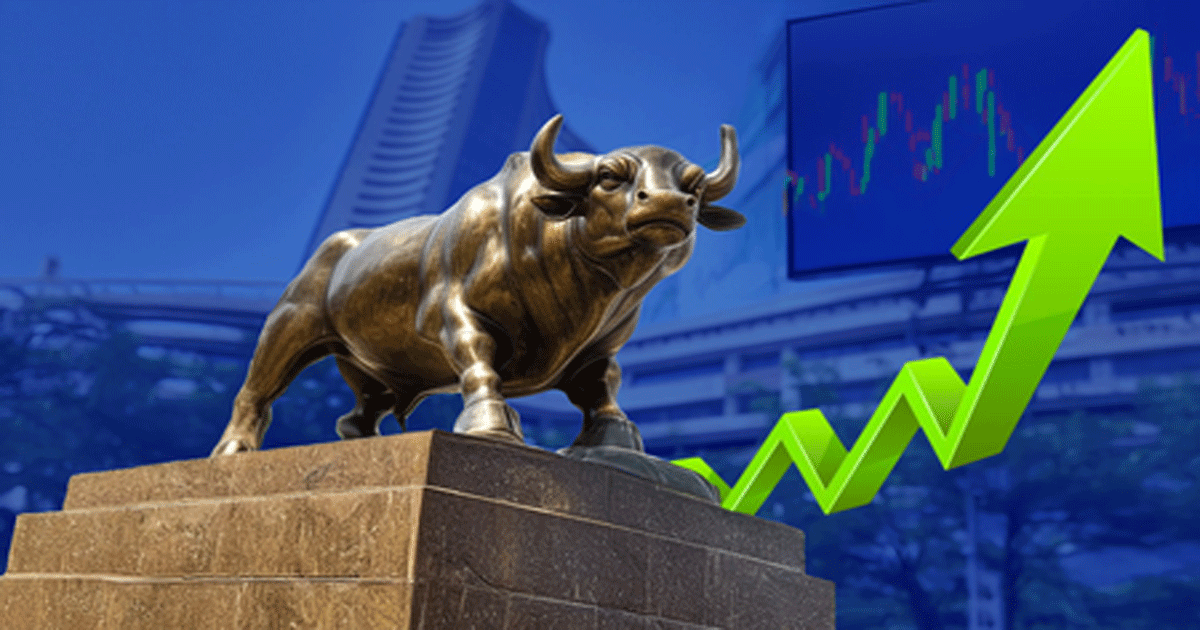Business
Centre-states may discuss early inclusion of natural gas into GST fold

With GST revenue collections making a rebound post the disruptions caused by the second wave of Covid pandemic, the Centre is likely to initiate dialogue with states for inclusion of petroleum products under the new indirect tax fold.
Sources privy to the development said that based on the Petroleum Ministry’s suggestion, the Centre may take up with GST Council the issue of bringing natural gas under the Goods and Services Tax (GST) regime to begin with before the entire oil and gas sector is brought under it.
The 45th GST Council meeting is scheduled on September 17, 2021 at Lucknow. Though the council members will discuss several pending issues such as states compensation, revision of GST rates on Covid essentials, inverted duty structure, the Centre is also likely to take up the case for early inclusion of gas into the new taxation fold.
With revenue position remaining strained due to Covid-19 outbreak, states have been reluctant to consider bringing high revenue generating petroleum products under GST fold. But with GST collections improving substantially this year remaining above the Rs 1 lakh crore psychological-mark in most months of FY22, the Centre feels it is the right time to push for tax reforms in the oil and gas sector as well with the inclusion of gas helping in plan to develop a gas-based economy in the country.
Inclusion of gas would not pose a challenge for the GST Council as it is largely an industrial product where a switchover to the new taxation would not be difficult. The revenue implication for the states is also low in the case of this switchover.
“States are in a fairly better position now with GST revenue hitting over Rs 1 lakh crore-mark for the past few months and Centre has also improved their liquidity position through additional borrowing schemes. This should make phased inclusion of petroleum products under GST easier for the council,” said an official source in the oil ministry.
GST levy on natural gas would help state-run oil companies such as ONGC, IOCL, BPCL and HPCL to save tax burden to the tune of Rs 25,000 crore as they would get credit on taxes paid for inputs and services. Tax credits are not transferable between the two different taxation systems.
The Steering Committee for Advancing Local Value-Add and Exports (SCALE) chaired by Mahindra & Mahindra MD & CEO Pawan Goenka in its report to the commerce ministry has also batted for provision of input tax credit of natural gas to make its prices more competitive. This could happen once it is included in GST.
Sources said Council could consider a three-layered GST structure for gas where residential piped natural gas (PNG) is taxed at a lower rate of 5 per cent, commercial piped natural gas could be taxed at a median rate of 18 per cent, and car fuel CNG could be taxed at a maximum rate of 28 per cent. However, such a proposal has not yet been drafted and it could be put on table after consensus is arrived at inclusion of gas under GST.
Gas sales, including CNG and piped gas supplies, attract VAT ranging from 5-12 per cent.
As part of its efforts to build consensus with the states on GST launch, the government had decided to exclude five petroleum products — crude oil, petrol, diesel, ATF and natural gas — from the list of items placed under GST, but included products such as cooking gas, kerosene and naphtha in the new regime.
Business
Nifty, Sensex open flat as investors wait for fresh cues, US Fed meet outcome

Mumbai, Sep 15: The Indian benchmark indices opened on the flat note with a positive bias on Monday, on the back of positive domestic inflation data and growing expectations of a US Federal Reserve rate cut.
As of 9.30 am, the Sensex was up 4.5 points or 0.005 per cent at 81,909, and the Nifty was up 4.15 points or 0.017 per cent at 25,118.
The broadcap indices outperformed benchmark indices, as Nifty Midcap 100 inched up by 0.26 per cent, and the Nifty Small cap 100 moved up 0.53 per cent.
Bajaj Finance, Tata Motors, Hero Motocorp and Bajaj Finserv were the top gainers on NSE Nifty 50 index. Infosys Ltd., Tata Consultancy Services, Sun Pharmaceutical Industries, Dr. Reddy’s Laboratories Ltd., and Shriram Finance Ltd. weighed on the Nifty 50 index.
Among sectoral indices, Nifty Realty, the top gainer, jumped 1.19 per cent. Nifty PSU bank (up 0.39 per cent) and Nifty Auto (up 0.38 per cent) were the other major gainers. Nifty Pharma was the top loser down 0.78 per cent.
Inflation had cooled to 2.07 per cent well below the RBI’s projection of 3.1 per cent in August, latest government data said.
Analysts said that Indian equities, which have recently underperformed compared to global peers, now appear attractively valued. Positive factors such as ongoing GST reforms, anticipation of a Fed rate cut, and improving US–India trade ties are expected to further support the market.
Last week, Nifty 50 notched its eighth consecutive advance, closing above the symbolic 25,100 mark for the first time since July—its longest winning streak in a year and the biggest weekly gain in nearly three months.
“Nifty has been gradually taking out the crucial resistances and on the weekly chart, the Nifty has confirmed a pattern of higher tops and higher bottoms, which is an encouraging sign for a sustained positional bullish trend,” said Devarsh Vakil, Head of Prime Research at HDFC Securities.
Nifty seems to be heading towards the next resistance of 25,250, while the 24,900 level could offer support, he added.
Major US indices posted strong weekly gains and closed near all time highs. The Nasdaq rose 2.0 per cent, the S&P 500 gained 1.6 per cent, and the Dow advanced 1.0 per cent, marking the best week since early August.
Most of the Asian markets made strong gains during the morning session. While China’s Shanghai index advanced 0.22 per cent, and Shenzhen added 1.07 per cent, Japan’s Nikkei rose 0.89 per cent, while Hong Kong’s Hang Seng Index jumped 0.32 per cent. South Korea’s Kospi inched up 0.52 per cent.
The US markets are pricing in a 96.4 per cent probability of a 25-basis-point rate cut on September 17, with additional cuts expected through year-end. Softer labour data and persistent inflation support the dovish shift, boosting demand for equities and cryptocurrencies, said analysts.
Business
Adani Power signs pact to supply 2,400 MW power to Bihar

New Delhi, Sep 13: In a significant development, Adani Power Ltd (APL) has signed a 25-year power supply agreement with Bihar State Power Generation Company Ltd (BSPGCL) to supply 2,400 megawatt (MW) of power to the state, the Adani Group’s firm said on Saturday.
Under the agreement, the India’s largest private sector thermal power generator would supply the proposed power from a greenfield ultra super critical plant to be set up at Pirpainti in Bhagalpur district of Bihar.
The development came after a Letter of Award (LoA) by BSPGCL to APL, on behalf of North Bihar Power Distribution Company Ltd (NBPDCL) and South Bihar Power Distribution Company Ltd (SBPDCL) in August.
Adani Power won the project by offering the lowest supply rate at Rs 6.075 per kWh.
“The company is planning to invest approximately $3 billion to build the new plant (800 MW X 3) and its supporting infrastructure under the Design, Build, Finance, Own, and Operate (DBFOO) model,” the APL informed.
The coal linkage for the power plant has been allocated under the SHAKTI Policy of the government of India.
During the construction phase, the project will generate around 10,000 to 12,000 direct and indirect employment. Once it becomes operational, it will employ 3,000 people.
APL aims to commission the plant in 60 months.
Earlier, in a first-of-its-kind adoption of the greenshoe option in a thermal power tender in India, APL was awarded a total of 1,600 MW capacity by MP Power Management Company Limited (MPPMCL).
The company received a LoA from MPPMCL, awarding 800 MW additional capacity under the ‘Greenshoe Option’.
Both units (800MW x 2) in Anuppur district, Madhya Pradesh, will be commissioned within 60 months of the appointed date.
APL said that it will invest around Rs 21,000 crore towards setting up the plant and related infrastructure.
The project is expected to generate direct and indirect employment of 9,000-10,000 during the construction phase, and 2,000 once in operation.
Business
Stock market ends week on positive note, clock 8 consecutive session gains despite uncertainties

Mumbai, Sep 12: The Indian equity indices ended the week on a positive note on Friday, maintaining the winning streak for the eight consecutive trading sessions despite geo-political uncertainties.
Optimism over a potential rate cut by the US Fed, positive developments in India-US trade talks and buying in defence stocks fueled the market sentiment.
Sensex settled the session at 81,904.70, up 355.97 points or 0.44 per cent. The 30-share index started trading with a decent gap-up at 81,758.95 against last day’s closing of 81,548.73. The index extended the momentum further amid positive global cues to hit an intraday high at 81,992.85.
Nifty closed at 25,114.0, up 108.50 points or 0.43 per cent.
The national market closed at a three-week high, supported by renewed global optimism over a potential Fed rate cut. Sentiments improved further on reports that the EU may reject U.S. tariff proposals on India for buying Russian oil, analysts said.
Progress in the US-India trade talks is also expected to keep the positive momentum intact in the near term. The defence sector outperformed, aided by the Indian procurement authorities beginning negotiations for six next-generation conventional submarines, analysts added.
BEL, Bajaj Finance, Bajaj FinServ, Axis Bank, Maruti, Tata Motors, ICICI Bank, L&T, Infosys, and PowerGrid were the top gainers from the Sensex basket. Eternal, Hindustan Unilever, Trent, Asian Paint, Bharati Airtel and ITC settled lower.
The majority of sectoral indices settled higher. Nifty Fin Services jumped 184 points or 0.70 per cent, Nifty Bank escalated 139 points or 0.26 per cent, Nifty Auto increased 122 points or 0.46 per cent, and Nifty IT settled the session 107 points or 0.3 per cent. Nifty FMCG fell.
Broader indices followed suit as well. Nifty Smallcap 100 moved 114 points or 0.64 per cent, Nifty Midcap 100 jumped 183 points or 0.32 per cent, and Nifty 100 closed 106 points or 0.41 per cent.
Rupee traded positively with gains of 0.18 per cent at 88.27 as mixed FII inflows supported sentiment.
“The dollar index remained weak below 98, providing additional strength to the rupee, while ongoing trade deal talks with the US also added optimism. Weakness in crude prices offered further minor support,” said Jateen Trivedi f LKP Securities.
Overall, the rupee looks set to gain some lost ground with scope to test 87.75 in the coming days, while 88.50 is seen as a reversal resistance zone, he added.
-

 Crime3 years ago
Crime3 years agoClass 10 student jumps to death in Jaipur
-

 Maharashtra12 months ago
Maharashtra12 months agoMumbai Local Train Update: Central Railway’s New Timetable Comes Into Effect; Check Full List Of Revised Timings & Stations
-

 Maharashtra11 months ago
Maharashtra11 months agoMumbai To Go Toll-Free Tonight! Maharashtra Govt Announces Complete Toll Waiver For Light Motor Vehicles At All 5 Entry Points Of City
-

 Maharashtra12 months ago
Maharashtra12 months agoFalse photo of Imtiaz Jaleel’s rally, exposing the fooling conspiracy
-

 National News11 months ago
National News11 months agoMinistry of Railways rolls out Special Drive 4.0 with focus on digitisation, cleanliness, inclusiveness and grievance redressal
-

 Crime11 months ago
Crime11 months agoBaba Siddique Murder: Mumbai Police Unable To Get Lawrence Bishnoi Custody Due To Home Ministry Order, Says Report
-

 Maharashtra10 months ago
Maharashtra10 months agoMaharashtra Elections 2024: Mumbai Metro & BEST Services Extended Till Midnight On Voting Day
-

 National News12 months ago
National News12 months agoJ&K: 4 Jawans Killed, 28 Injured After Bus Carrying BSF Personnel For Poll Duty Falls Into Gorge In Budgam; Terrifying Visuals Surface


















